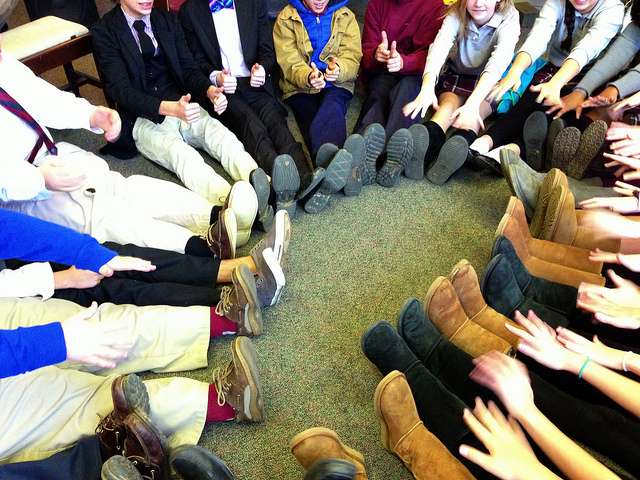Enlisting student emotions busts bullying behaviour

An approach to combating bullying in schools has found sharing feelings, building empathy and promoting social knowledge significantly improves the learning environment.
Murdoch University Honorary Research Associate Dr Veronica Morcom says her use of 'shared affective spaces' differs from anti-bullying programs currently used in WA schools because it enlists students' immediate emotions and does not focus solely on developing generic social skills.
"Students in the current research had been engaged in previous years with commercial social and emotional programs but this had little effect on a large group of students who continued to bully others," Dr Morcom says.
"A holistic approach in the classroom, where students talked about their emotions and linked their behaviour with feelings promoted a deeper level of understanding of what bullying behaviour is and why it needs to stop."
The approach involved social collaboration and creating safe spaces in which students shared their feelings and perceptions.
One of the strategies implemented was a daily social circle in which students stated their name and mood to acknowledge emotions and get to know one another better.
The students worked in social peer groups of four to six individuals which changed every six to eight weeks to foster inclusion and widen social networks.
Classroom problems resolved collectively
They also tackled classroom problems collectively in weekly meetings, finding solutions together.
"The process established and maintained cohesive relationships based on mutual respect because the teacher allowed students to make their issues transparent and negotiate how to resolve them," Dr Morcom says.
Through the process Dr Morcom aimed to guide students in connecting their feelings with concepts.
For example, students decided 'appreciating others' was similar to 'people listening' while 'people being friendly' sounded like phrases such as 'that's really good' and felt like 'proud', 'safe' and 'valued'.
To determine if students were understanding, internalising and acting upon this information Dr Morcom compared students' ongoing reflection logs with her observations and parental feedback.
By the end of the year there were significant changes in student words, actions and behaviour including one known bully having gone eight months without an incident and becoming a class leader.
"The social aspect of developing positive relationships is paramount to addressing bullying issues as it builds student confidence to express their point of view without fear of ridicule," Dr Morcom says.
Provided by Science Network WA















